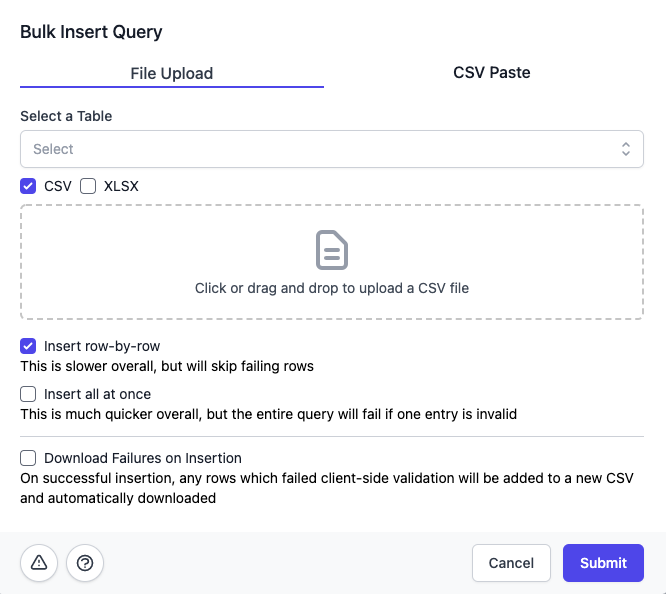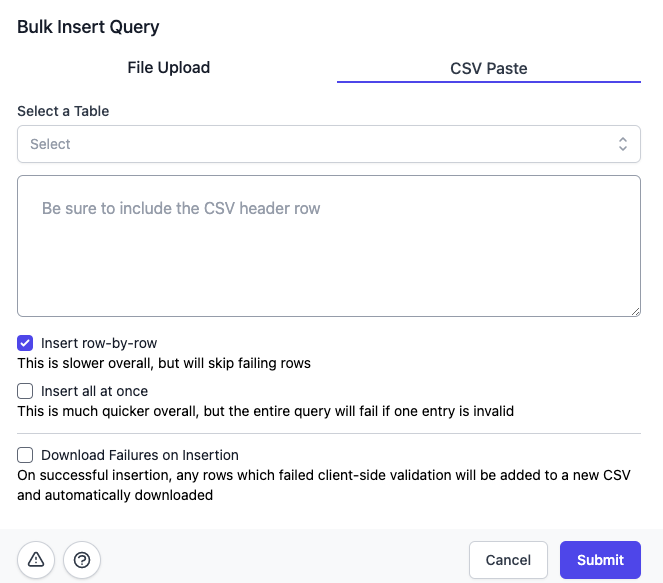Insert Bulk
In SpeSQL you won't actually be handling any of the SQL insert statements, rather SpeSQL generates the queries for you using the CSV parser or form-based single insert. For inserting multiple entries into the database at one time, you will want to use the Bulk Insertion methods outlined below
CSV File Upload#

File Types#
.csv and .xlsx files are supported. Only one file per upload. If you are uploading an .xlsx file be sure there is only one sheet in the document.
Table & File Selection#
All that is required to run an insert query is to select the target destination (the table in the database to insert into) and then the CSV/XLSX file containing the entries to insert. In the File Upload method, you simply drag and drop your desired CSV file to load it in.
Row-by-Row#
Row-by-row insertion will run insert statements one-to-one with how many rows there are; rows will be validated and then inserted one at a time. The benefit with this method is that if a row were to pass client-side validation but throw a server error, this entry simply gets logged and skipped.
This method takes a considerable amount of time to process and insert
All at Once#
This is the 'true' bulk insert option; validation is run on all of the rows, and valid entries are added to a singluar insert query. The major benefit of this method is the time it takes to process and insert the data. One consideration is that since this is a singular query, if one of the entries throws a server-side error the entire query will fail.
Download Failures#
If selected, any rows that fail validation will be downloaded to their own CSV document. This is a utility added so that you may automically separate the rows that were uploaded from those that were not.
CSV Paste#

Much of the CSV File Upload information above is applicable to this method, as well. The main difference is the way in which data gets loaded in.
CSV Paste Structure#
Rather than uploading the file using a file selection pop-up dialogue, you copy and paste the data directly into the text-area. An important note is to ensure you always paste the header row, otherwise the query will be rejected.